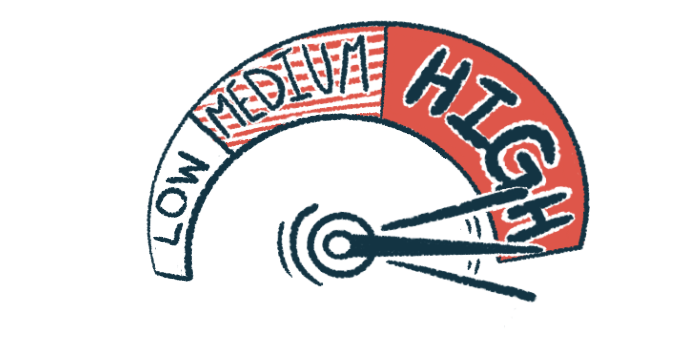NMOSD among autoimmune disease risk factors: Study
Patients seen at higher risk of developing another condition

People with neuromyelitis optica spectrum disorder (NMOSD) are at a nine times higher risk of developing autoimmune rheumatic diseases, or those affecting the joints, muscles, or connective tissue, a South Korean study found.
Connective tissue provides support, connection, and binding for tissues and organs.
The findings align with a U.S. study that found NMOSD increases the risk of the autoimmune rheumatic diseases Sjögren’s syndrome and systemic lupus erythematosus, or SLE, the most common form of lupus, by up to 12 times. In the South Korean study, the risk was even higher: more than 80 times for Sjögren’s and more than 30 times for SLE.
Further research is needed “to replicate the findings, and … to determine the common mechanisms between [NMOSD] and ARD [autoimmune rheumatic disease] and to develop medications,” the researchers wrote.
The study, “Risk of Autoimmune Rheumatic Diseases in Multiple Sclerosis and Neuromyelitis Optica Spectrum Disorder: A Nationwide Cohort Study in South Korea,” was published in Mayo Clinic Proceedings.
Autoimmune disease risk factors and NMOSD
In NMOSD, self-reactive antibodies drive inflammatory attacks against the optic nerves, which connect the eyes to the brain, and the spinal cord, leading to several neurological NMOSD symptoms.
Autoimmune rheumatic diseases, mainly Sjögren’s and SLE, have been reported in people with NMOSD. However, “there are few nationwide … studies of the risk of ARD in NMOSD other than SLE and SS [Sjögren’s syndrome],” the researchers wrote.
They drew on data from South Korea’s National Health Insurance Service to see whether people with NMOSD or multiple sclerosis (MS) are at an increased risk of autoimmune rheumatic diseases. MS, like NMOSD, is an autoimmune disease that damages nerve cells in the brain and spinal cord.
Data from 2,071 people diagnosed with NMOSD and 1,987 people diagnosed with MS were compared with data from 40,580 controls without these diseases (20,710 for NMOSD and 19,870 for MS). The controls were matched to patients in terms of age, sex, and common health conditions such as high blood pressure and diabetes.
The researchers calculated how many new cases of autoimmune rheumatic diseases appeared each year per 1,000 people in both groups, counting only those that appeared at least one year after a diagnosis of NMOSD or MS. On average, patients in each group were followed for about four years starting one year from their original diagnosis.
Among NMOSD patients, there were 9.13 cases of autoimmune rheumatic diseases per 1,000 person-years. For people with MS, the rate was lower, at 3.56. A person-year combines the number of people in a study with the amount of time they were followed. One person-year can equal to one person being followed for one year.
These rates translated into a nine times higher risk of autoimmune rheumatic diseases for people with NMOSD compared with those without NMOSD. For people with MS, the risk was increased by five times compared with the controls.
For certain autoimmune rheumatic diseases, the risk was higher. For example, people with NMOSD had the highest risk of Sjögren’s: 82 times higher than for people without NMOSD.
This was followed by SLE (30 times higher risk), Behçet disease (15 times higher risk), and seropositive rheumatoid arthritis (nearly fourfold higher risk). The risk of people with MS developing any of these diseases was lower relative to those with NMOSD.
The youngest group of people with NMOSD, those aged 20 to 39, had the highest risk of autoimmune rheumatic diseases, at 13 times higher than their matched controls. Those aged 40 to 64 had a seven times increased risk, and those 65 and older had a five times higher risk.
While the rates of autoimmune rheumatic diseases may vary between NMOSD and MS, both types of patients may be at increased risk of such conditions. Because NMOSD and MS share many environmental mechanisms, preventing common environmental risk factors “may both prevent relapses” and “reduce the risk for development of ARD,” the team wrote.
At the same time, “future research to understand the common or different immune mechanisms between MS/NMOSD and [autoimmune rheumatic diseases] may contribute to the development of novel therapeutic drugs targeting both simultaneously,” the researchers concluded.







